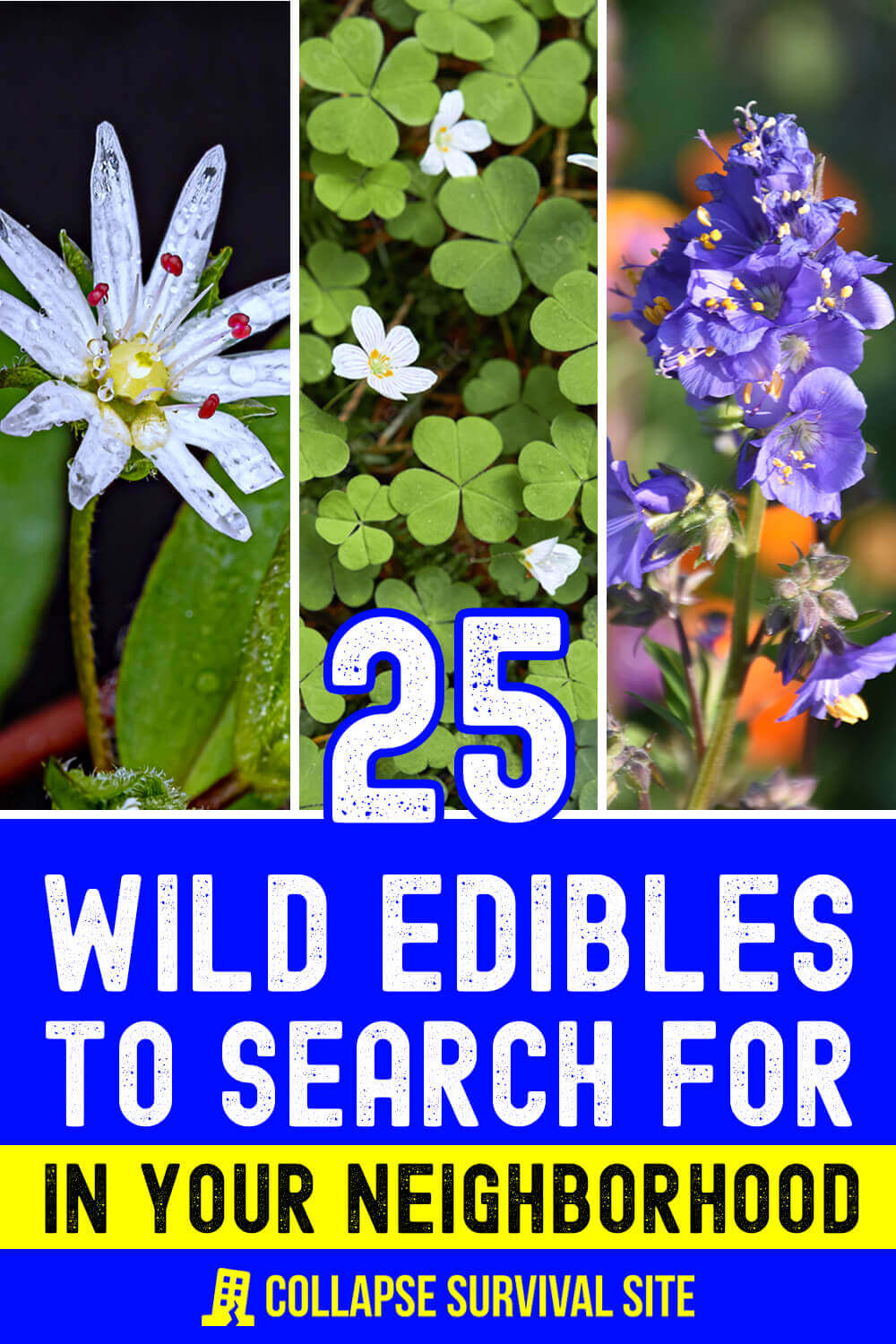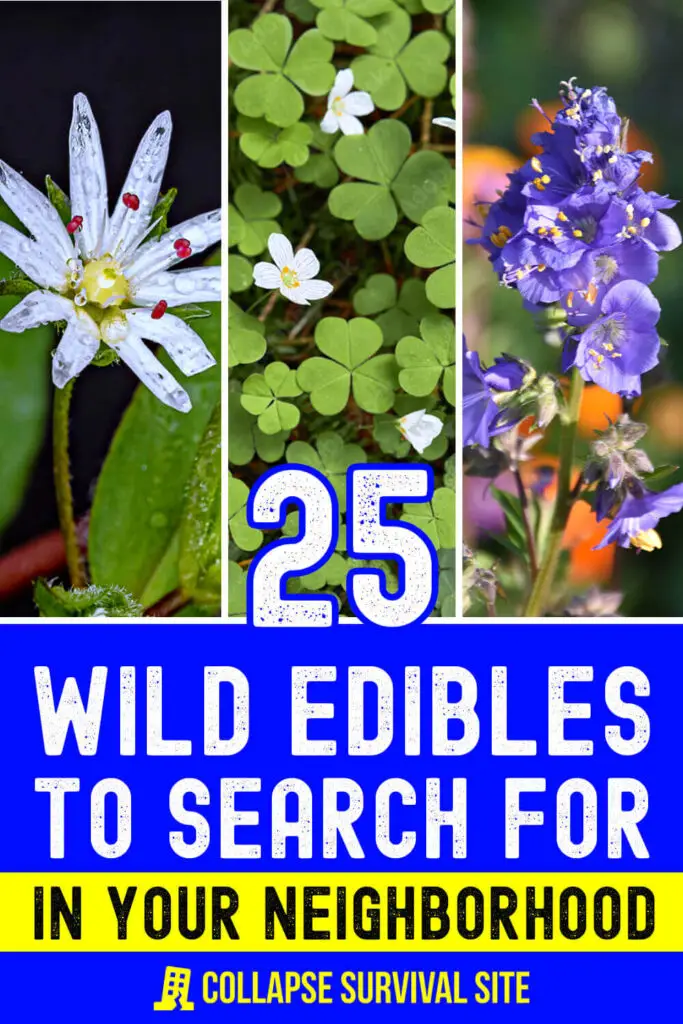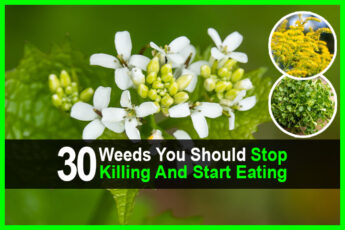Estimated reading time: 15 minutes
It's hard to read the headlines today without learning of some new catastrophe. Many of these events disrupt local, regional, or national food supplies.
You probably already know the basics of establishing a survival pantry in your home. But what are some other options for getting the food you need when you need it? Some food may be hiding in plain sight in your backyard and around your neighborhood.
This article offers a list of wild edibles you can forage for nutritional and medicinal benefits during a long-term crisis. By becoming familiar with them now, you will have the advantage of knowing where – and where not — to look when your food supply is in peril.
Before we get to the list, however, here’s a word of caution. Foraging for wild edibles is not without its dangers. Avoiding plants that may have been exposed to pesticides or other chemicals is essential. We'll give some specific safety tips at the end of this list of wild edibles to search for in your neighborhood.
Want to save this article for later? Click Here to Pin It On Pinterest!
1. Asparagus

Wild asparagus grows abundantly in many North American locations in early spring. It particularly likes sunny, moist areas. Wild asparagus has a thinner stalk than the kind you find in your supermarket. You'll get the most out of its vitamin C, vitamin B6, thiamine, and potassium content by eating it raw. Or, you can boil, roast, or steam it.
2. Bittercress
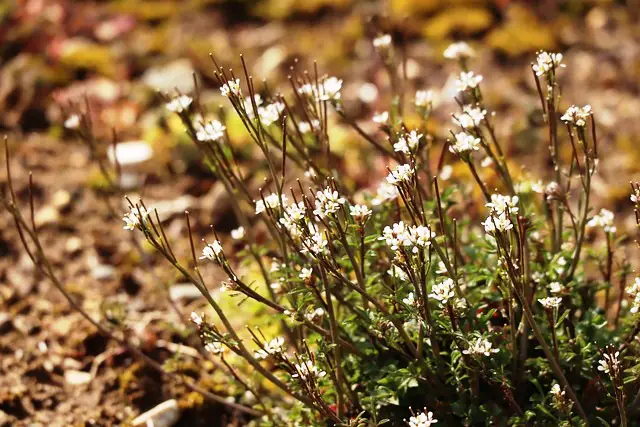
Don't let the name fool you. As a member of the mustard family, bittercress has a mild mustardy, not a bitter, taste. You can eat raw young, tender leaves in a salad or cook the larger, older ones in soups and stews. However, all parts of the plant are edible and offer vitamin C. You can eat the seed pods and flowers as is.
3. Burdock

Although you may only know this plant for the spiky balls its flowers become, you can harvest burdock as a food and as a medicine. Once again, the leaves taste best when they are young and tender in the spring.
You also can dig up the spring roots to enjoy in stir-fries. Ancient Chinese medicinal treatments use burdock as an herb to treat sore throats and colds. The plant is a natural source of fiber and helps improve digestion.
4. Cattails
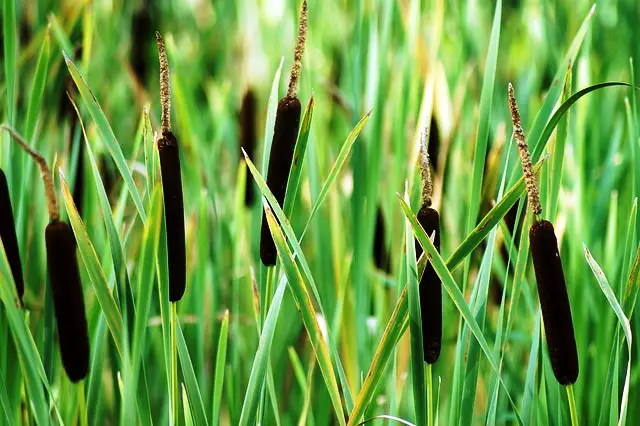
You've seen them growing beside ponds and in wetlands, but did you know you can eat cattails? The entire plant is edible, but the tastiest part is the white part of the young stems.
You can even harvest the roots in the fall and then dry and pound them into a nutritious flour. There's more. The gel-like substance between cattail leaves has antiseptic and pain-relieving properties.
5. Chickweed
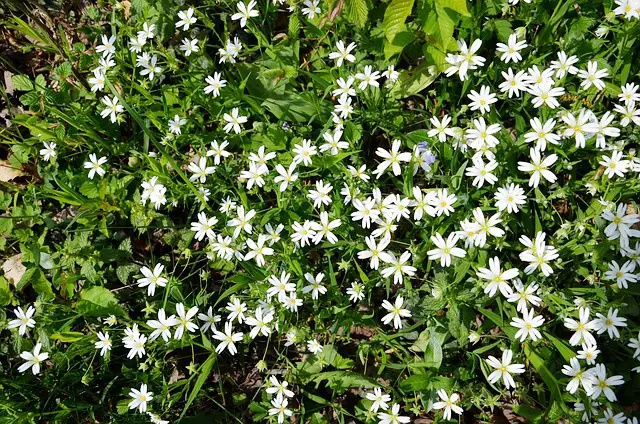
Chickweed finds its way to nitrogen-rich soil, such as near a compost pile. Its leaves have a mild flavor and can be eaten either raw or cooked. The plant also is rich in saponins, compounds that can help clear mucous membranes and ease sinus congestion. Chickweed provides vitamin C and antioxidants.
6. Chicory
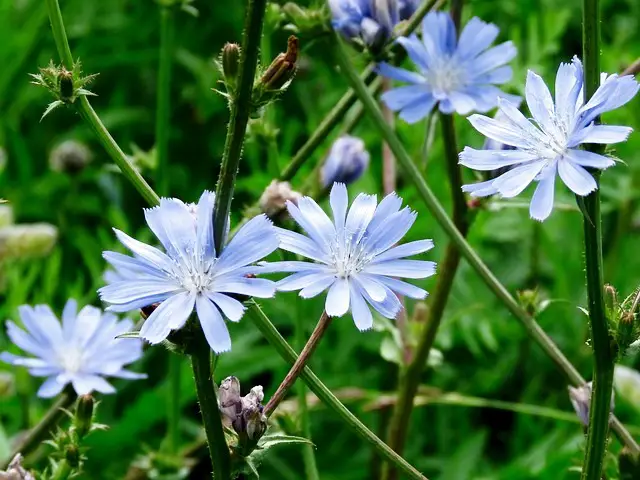
Here's another wild plant that is entirely edible and nutritious. You can eat tender, raw chicory leaves as you would spinach, and you can eat the small flowers too.
Additionally, you can boil this bushy plant's roots and older leaves for soups and stews. Or you can try drying and roasting the roots to make coffee. Benefits of eating chicory include improved digestive health, immune function, and nutrient absorption.
7. Clover
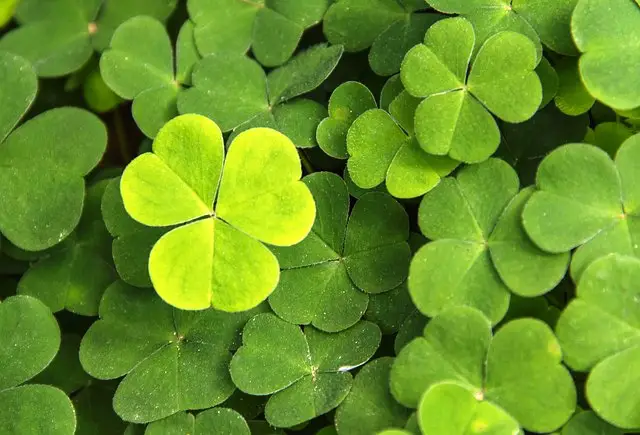
Forget the “leaves of three, let it be” rule when it comes to clover. You can eat the leaves of this plant that loves to spread across fields and meadows. Try them raw, boiled, or sauteed. The young flowers are edible too. Clover provides protein, beta carotene, vitamin C, B vitamins, and other nutrients.
8. Curly Dock
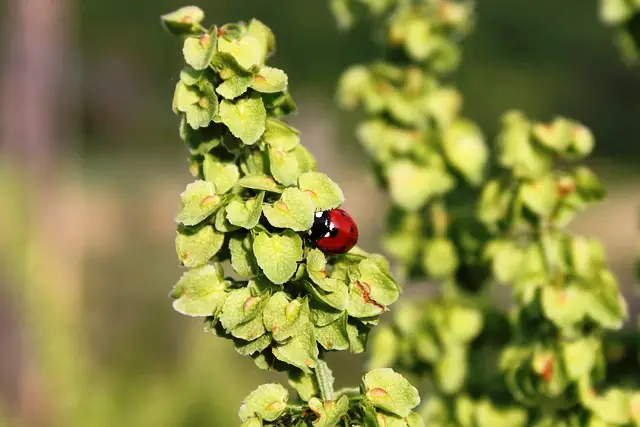
Also called yellow dock, this wild edible may be growing in your backyard right now. Harvest its leaves when they are young and tender for the best flavor. Curly dock contains vitamins A, C, B1 and B2, and iron. Herbalists have long used curly dock leaves to ease stings, bites, burns, blisters, and sprains.
9. Dandelion
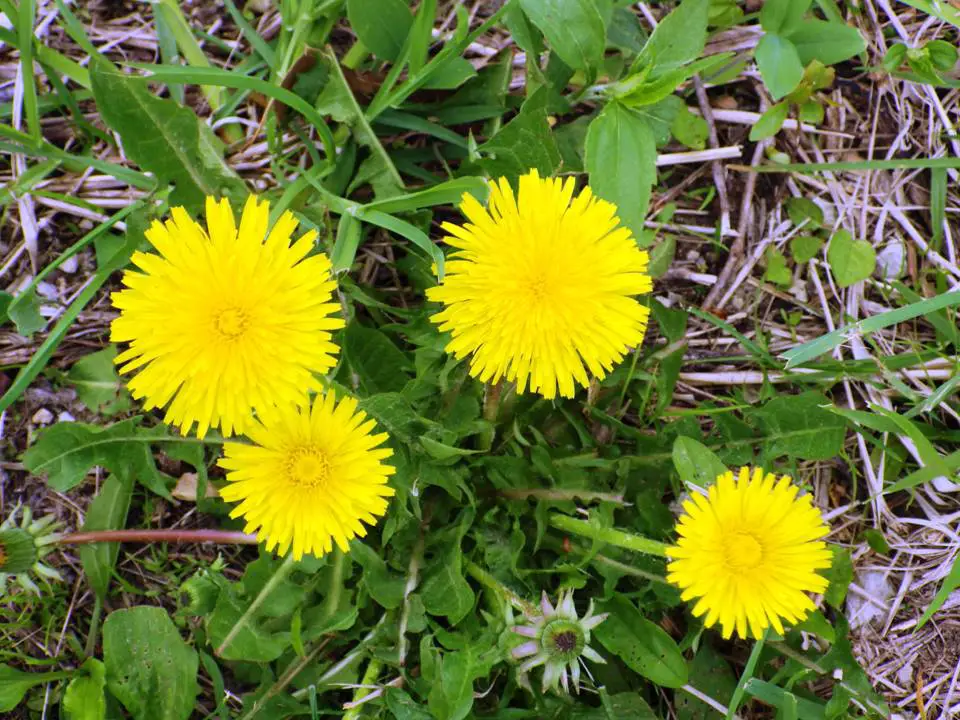
You can make good use of the entire dandelion plant for food and nutrition. Dandelions are rich in vitamins B2, A, and L and contain as much iron as spinach. As usual, the younger the plant, the better the taste. You can also make dandelion tea, wine, and coffee. (Plus, pollinators love your dandelions!)
10. Fiddleheads
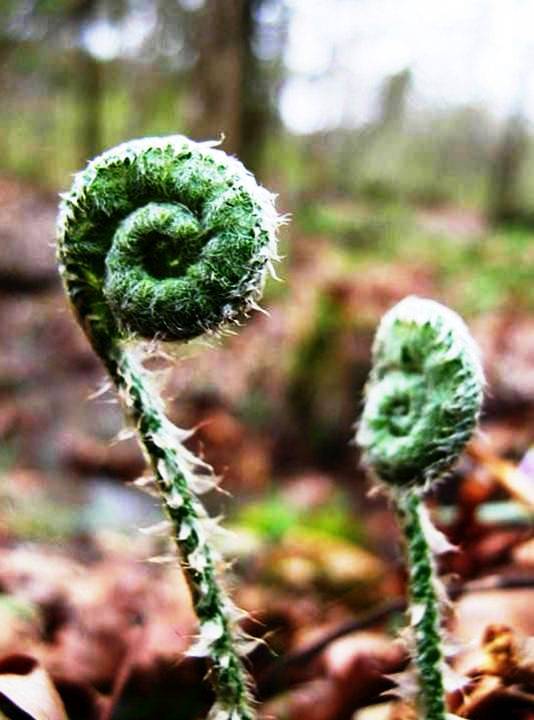
These tightly furled fronds of young ferns have a slightly grassy, nutty taste that many people say is a cross between asparagus, broccoli, and spinach. You'll know them by their distinctive appearance, which looks like the head of a fiddle.
But be sure to grab them when you see them in the early spring. They'll unfurl in only a few days. Fiddleheads are high in iron, potassium, and antioxidants.
11. Green Seaweed
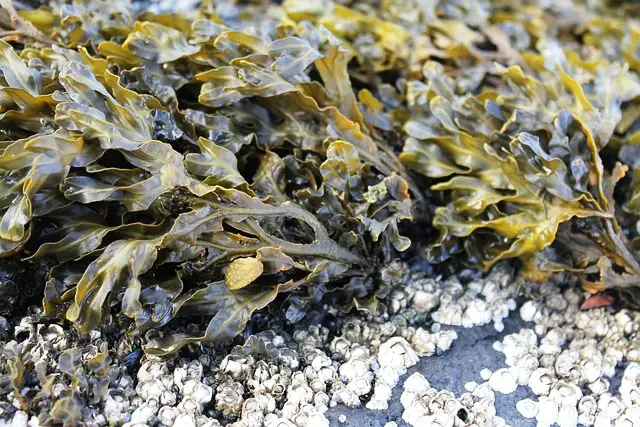
You can pull green seaweed from seawater areas to rinse, dry, and eat. In terms of nutrition, seaweed is a superfood that is prized the world over. However, be aware of state guidelines for foraging seaweed and follow tips for safe foraging and eating.
12. Ground Elder

One way to control this pervasive weed is to dig it up and eat it. Ground elder tastes similar to celery and parsley and can be eaten in soups and salads. Young ground elder leaves are rich in vitamin C. Herbalists have used it for generations in treatments for inflammation, gout, rheumatism, sciatica, hemorrhoids, and water retention.
13. Ground Ivy
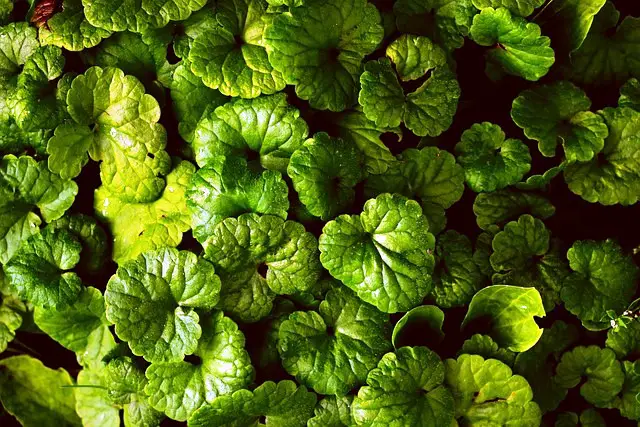
This fast-spreading ground cover can be eaten raw as you would other leafy greens. However, like many of the edibles on our list, ground ivy tastes best when its leaves and shoots are young and tender. Traditional herbalists use ground ivy for its anti-inflammatory, diuretic, and calming properties.
14. Kelp
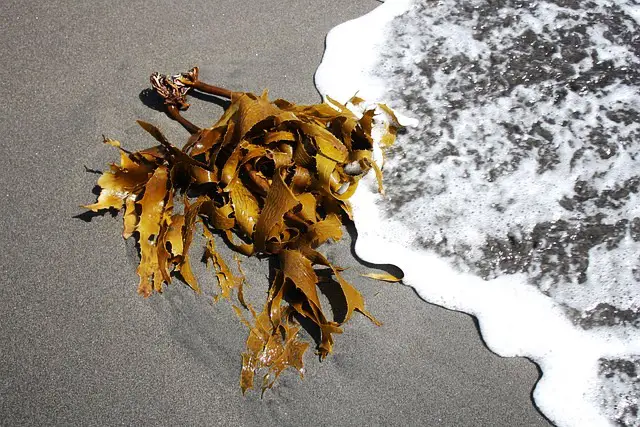
Like seaweed, kelp is a nutritional powerhouse that is found on beaches throughout the world. You can eat it raw or boiled in a soup or stew to benefit from its high folate and vitamin K content. Check for foraging rules and regulations in your state.
15. Lemon balm
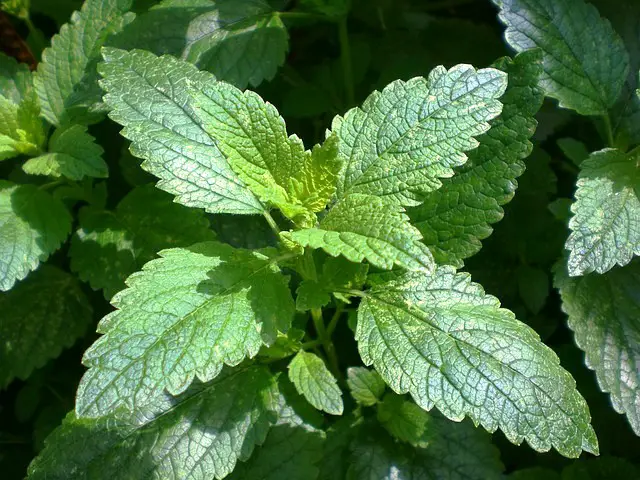
You may have heard of or tried lemon balm tea, but did you know you also can eat the leaves and flowers of this wild plant? A member of the mint family, lemon balm has a mild lemon aroma. It has been used for centuries for its calming effects.
16. Linden

The curled leaf bud that emerges from this wild plant in early spring tastes similar to sweet peas. However, every part of linden is edible, including its leaves, which you can toss in a salad. You also can use linden flowers to make a soothing tea that has a sweet, floral taste.
17. Plantain
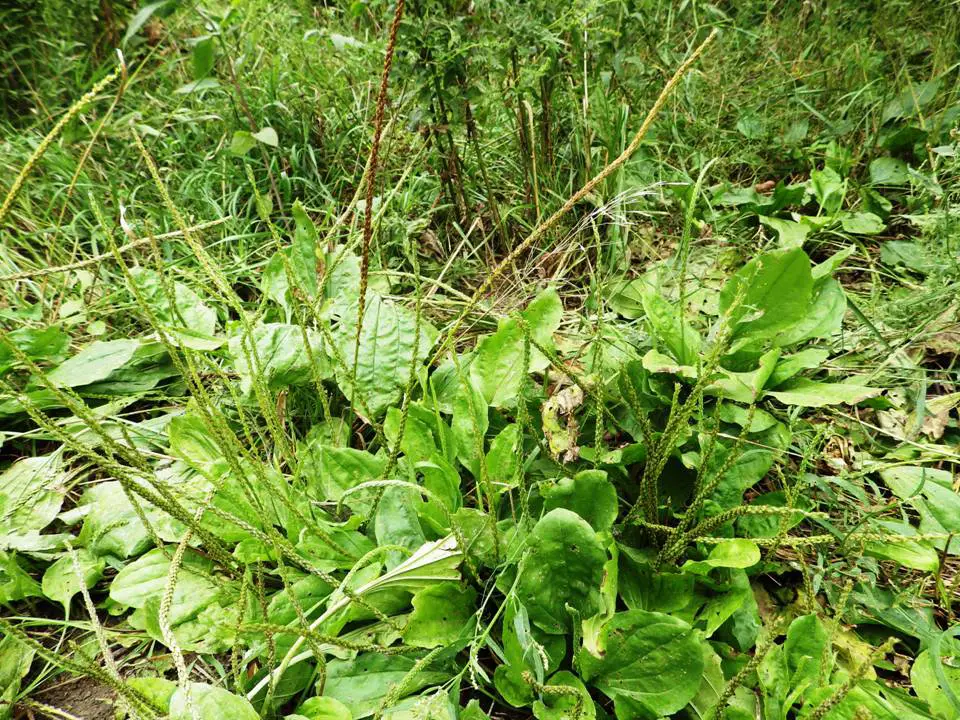
Although many people confuse this wild edible with the banana-like plant with the same name, this plantain has been regarded as an herbal remedy for minor skin wounds for centuries.
You can harvest young plantain leaves to eat in salads and soups. The older they get, the more fibrous they become, so you'll want to cook older leaves to make them more palatable. Plantain leaves are rich in vitamins A and C.
18. Prickly Pear Cactus
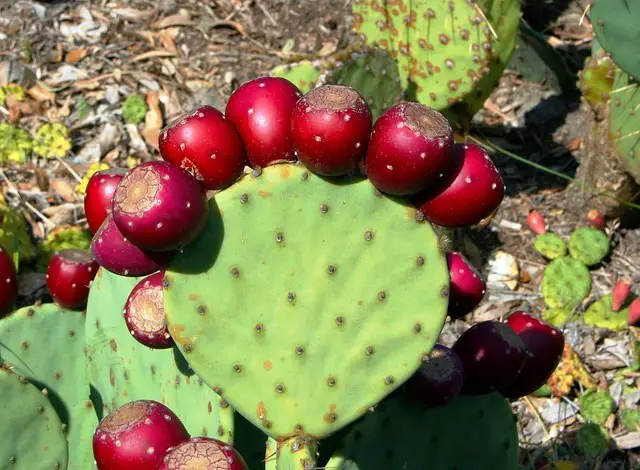
Although it definitely has spikes and thorns, if you take care, you can enjoy the fruit and stem of this desert plant. After you remove the thorns, you'll be rewarded with sweet-tasting fruit and nutritious pads.
The prickly pear fruit is high in vitamin C and calcium; the pads are an excellent source of fiber, vitamin A, and potassium.
19. Purslane
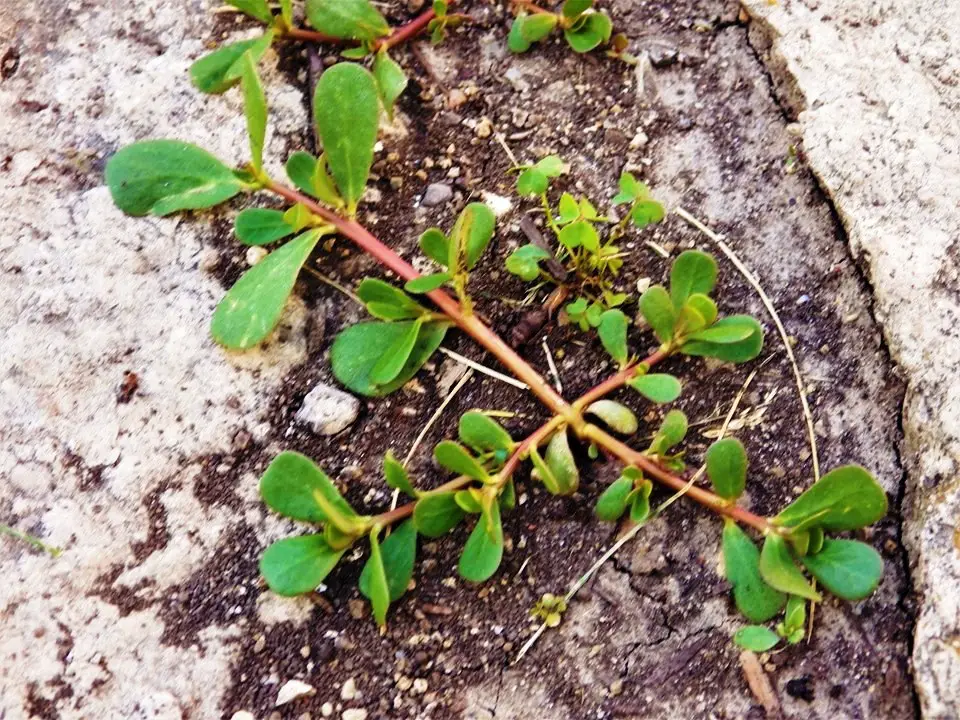
Although it is often considered to be a noxious weed, purslane can be a welcome source of nutrition when food is scarce. You can eat its smooth, flat leaves raw.
Or, if you prefer a milder taste, you can boil them. Purslane's tiny black seeds also may be consumed as is or used to make tea. Purslane contains vitamin A, omega-3 fatty acids, and beta-carotene.
20. Tree sap
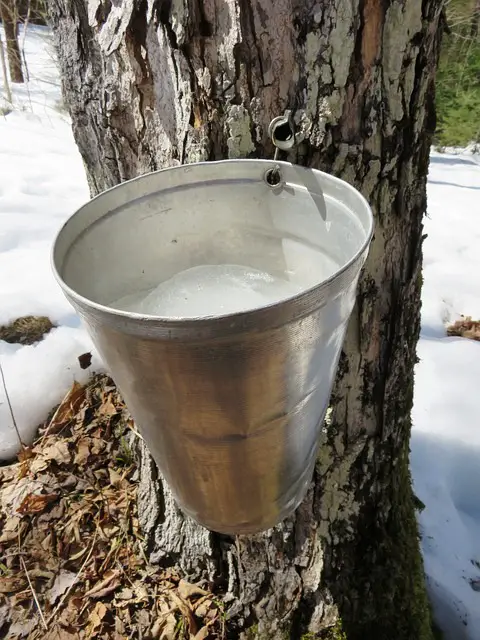
You can tap more than just maple trees for their tasty and nutritious syrup. Black walnut, ash, shagbark hickory, and elm trees are a few examples. These tree saps contain healthy minerals, enzymes, and antioxidants. You also can harvest pine sap for homeopathic purposes.
21. Violets
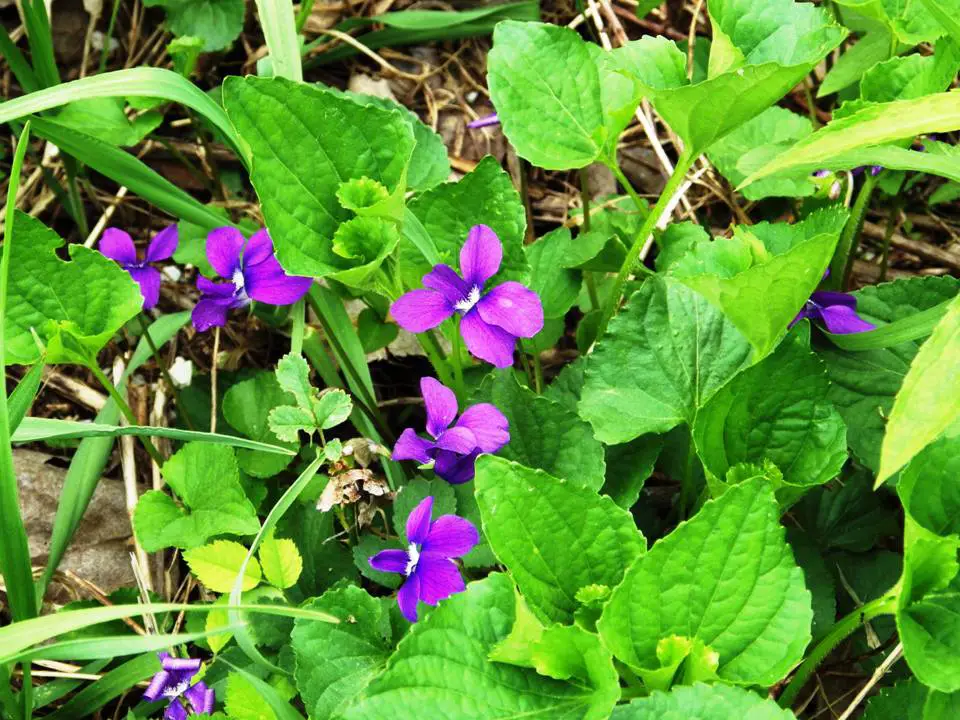
It's easy to spot violets in the spring, but you can do more than enjoy their bold color. When food is scarce, you can eat young violet blossoms and leaves. Herbalists have long used violets and violet tea to ease coughs and congestion.
22. Watercress
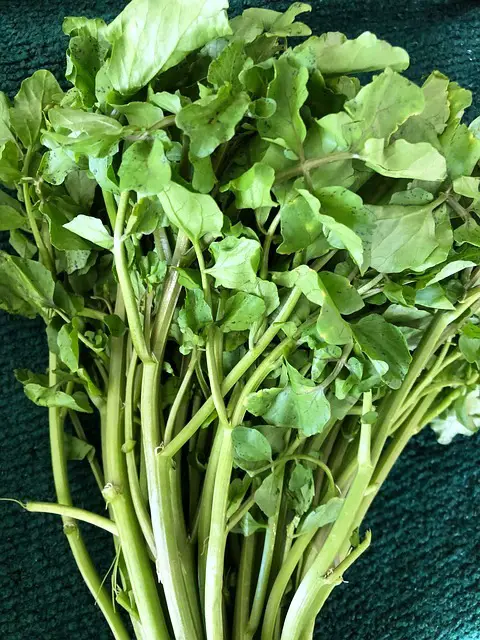
An edible water plant, watercress is in the mustard family and can be eaten in salads, soups, and sandwiches. Watercress, which is rich in vitamins A, C, and E and various minerals, is a floating or creeping plant with groups of three to five oval leaflets. It's best to wash watercress thoroughly to remove any pollutants that may have been in the water.
23. White Mustard
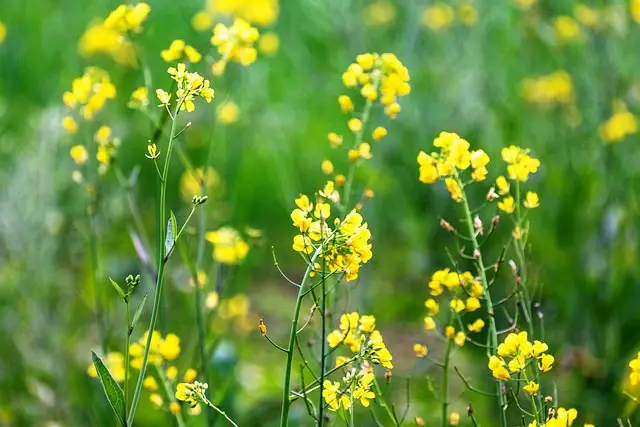
White mustard flowers bloom in late winter or early spring, and you can eat the blooms and young leaves raw or in a soup or stew. Despite its name, the wild plant produces an attractive yellow flower. You also can eat the stems, seed pods, and roots. White mustard contains vitamins A, C, E, and K, folic acid, calcium, iron, and other minerals.
24. Wild Onions
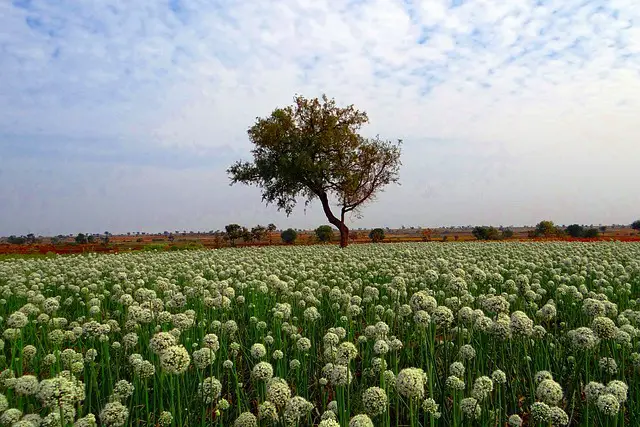
Trust your nose when you forage for wild onions, chives, or garlic. If the plant doesn't have that distinctive oniony or garlicky smell you'd expect, don't eat it. Wild onions are packed with nutrients like lutein, riboflavin, folic acid, thiamin, and antioxidants. Wild garlic has vitamin C, many B vitamins, folate, and thiamin.
25. Wood sorrel
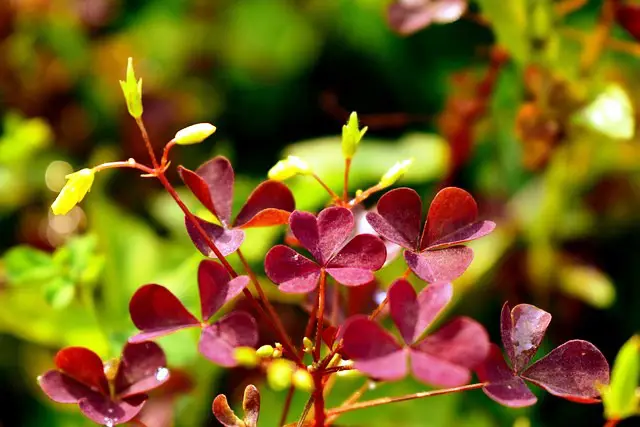
All parts of the wood sorrel plant, which grows wild in fields and woodlands, are edible. It features a tall, red stem with leaves that have a lemony taste. Some Native American tribes chewed on wood sorrel to quench their thirst and to treat mouth sores. Wood sorrel is high in protein and a good source of fiber and amino acids.
Safety tips for foraging wild plants
In addition to being wary of chemicals, waste, and roadside fumes a wild plant may have been exposed to, here are some other general plant characteristics to avoid when foraging. (We noted a few of the exceptions in our list.)
- umbrella-shaped leaves
- thorns, spines, or fine hairs
- glossy or bright leaves
- almond smell
- three-leaf structure
- parsley-like foliage
- black, purple, or pink grain heads
- white or yellow berries
Foraging experts stress that if you can't positively identify a plant, don't eat it. We did not include mushrooms on this list because they can be so tricky to identify safely. Field guides and apps can be very handy when it comes to identifying plants. Here are some resources to consider:
Books
- Foraging Wild Edible Plants of North America by Christopher Nyerges
- The Forager's Harvest by Samuel Thayer
- Native American Ethnobotany by Daniel E. Moerman
- Identifying and Harvesting Edible and Medicinal Plants in Wild (and Not So Wild) Places by Steve Brill and Evelyn Dean
Apps
- PictureThis plant identifier
- Wild Edibles Forage
- iNaturalist
Finally, this article's intent is to give ideas for food during an emergency. However, foraging for food can be a useful practice at any time. Either way, an important foraging rule is to take only what you need and leave the rest for others.
Here are some other things to keep in mind when foraging:
1. Be mindful of other people's property. Ask permission before foraging on private property and check for rules and regulations on public property. You might be interested in reading the article, Food Law Gone Wild, on foraging regulations.
2. Be aware of poisonous plants that are in the area where you are foraging. Wearing long sleeves, long pants, and gloves can help protect you from poison ivy, poison oak, and stinging nettles, for example.
3. Examine wild plants for insects and other pests before taking them out of the area. You could bring unwelcome visitors to another location or your home.
And we'll close by repeating this golden rule from earlier – if you're not absolutely sure what a plant is, don't eat it.
Like this post? Don't Forget to Pin It On Pinterest!
